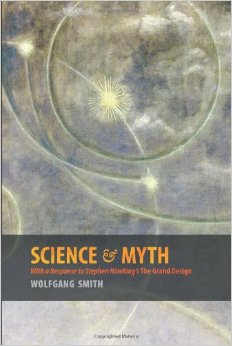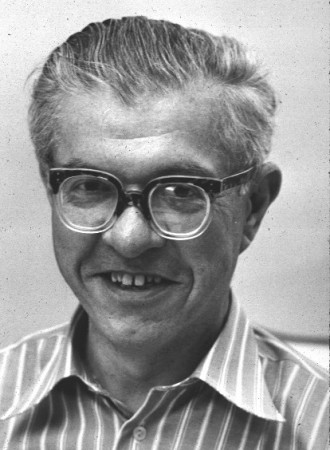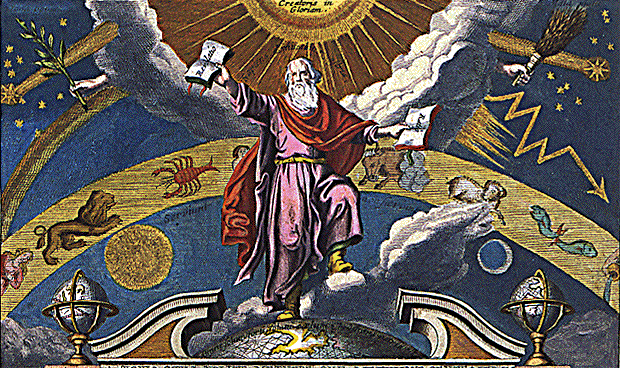In this series of posts about the history of relativistic cosmology, I’ll provide an epistemological analysis of the developments of the field from 1917 to 2006, based on the seminal articles by Einstein, de Sitter, Friedmann, Lemaitre, Hubble, Gamow and other main historical figures of the field. It appears that most of the ingredients of the present-day standard cosmological model, including the accelation of the expansion due to a repulsive dark energy, the interpretation of the cosmological constant as vacuum energy or the possible non-trivial topology of space, had been anticipated by Lemaitre, although his papers remain mostly unquoted.
From Myth to Science
What are the origins of the universe, of the stars, of the earth, of life, of man? These questions have given rise to many different myths and legends, and today they are more than ever the subject of intensive research by astrophysicists, biologists and anthropologists. What were once fanciful stories are now scientific models; but whatever form they take, ideas about the origins of the universe both reflect and enrich the imagination of the people who generate them. Every society has developed its own stories to explain the creation of the world; all of them are ancient myths rooted in religion.
Whereas in monotheistic religions God is believed to have existed before the Creation, in most other kinds of religion the gods themselves are thought to originate from a creative element such as Desire, the Tree of the Universe, the Mundane Egg, Water, Chaos or the Void.

A belief in some such primordial element, of which there are traces in every culture, underlies man’s thinking about the history of the cosmos like a primitive universal symbol buried in the collective subconscious. This may explain the vague links that can always be discerned between this or that creation myth and modern scientific descriptions of the origin of the universe –for example, big bang theory. There is therefore nothing mysterious or surprising about these correspondences other than that certain ways of thinking about the world should be so ingrained in the human mind.

In fact scientific and mythical explanations of the origins are neither complementary not contradictory; they have different purposes and are subject to different constraints. Mythical stories are a way of preserving collective memories, which can be verified neither by the storyteller nor by the listener. Their function is not to explain what happened at the beginning of the world but to establish the basis of social or religious order, to impart a set of moral values. Myths can also be interpreted in many different ways. Science, on the other hand, aims to discover what really happened in historical terms by means of theories supported by observation. Often considered to be anti-myth, science has in fact created new stories about the origin of the universe: big bang model, the theory of evolution, and the ancestry of mankind. It is therefore hardly surprising that the new creation stories developed by scientists tend to be regarded by the general public as modern myths.
Relativistic cosmology, which is now the accepted framework within which both the structure and the evolution of the universe are described, is full of examples of this kind of mythologizing, despite the fact that it is less than 100 years old. Indeed the ideological basis on which Einstein built his 1917 model of a static, eternal universe was partly philosophical; in order to complete the structure, he had to invent a factor called the « cosmological constant » and incorporate it into his general theory of relativity. The discovery that the universe was expanding meant that Einstein’s model had to be abandoned and in 1931, Georges Lemaître proposed a scientific explanation of the birth of space and time, according to which the universe resulted from the fragmentation of a « primeval atom » – a theory which may recall the ancient notion of everything hatching from a Mundane Egg. Lemaître’s model was subsequently revised and adjusted to become the basis of big bang theory.

The concept of « continuous creation », which enjoyed some popularity in the 1950’s, is an even more striking example of scientific myth making. At the time, big bang theory had not yet been fully substantiated by observation and many astrophysicists were reluctant to accept its metaphysical implications. Among them were Hermann Bondi and Thomas Gold, who in 1948 put forward the « steady state » theory, whose fundamental principle, known as the « perfect cosmological principle », related back to Aristotle. The Greek philosopher had maintained that the world was eternal and indestructible and therefore without beginning or end, in contradiction of Plato, who in Timaeus had expressed the idea that the world had begun and would end at a specific time. To compensate for the gradual dilution of matter that would result from the constant expansion of the universe, the steady state theorists had to invoke the idea of continuous creation of matter, at the rate of about one atom of hydrogen per cubic meter of space every five billion years.

In 1948 the English astronomer Fred Hoyle demonstrated that the steady state model was feasible on condition that a new field (which he called simply C for « creation ») was added to the equation; this ad hoc invention was envisaged as a reservoir of negative energy that had existed throughout the life of the universe – i.e. forever. The idea of continuous creation had appeared many times before (in the legends of the Aztecs, who believed that constant human sacrifices were necessary to regenerate the cosmos, as well as in the writings of Heraclitus and the Stoics, for example) and the scientific theory clearly followed this tradition. The theorists, however, had to « force » their model to fit their philosophical views by introducing unrealistic processes. The discovery of the cosmic background radiation in 1965 finally disproved their hypothesis and provided evidence for Lemaître’s big bang theory.

I paint, I read ,I mediate.i am very happy to know the connections coming to my mind are not only the result of my creativity, since the same happens to you. I hope more people will eventually get to know about your Blog. Please carry on with it!!!!